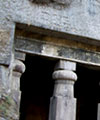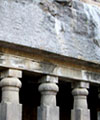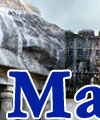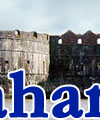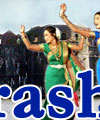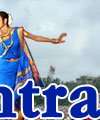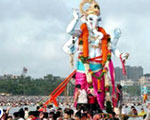|
Mumbai
Tourist Attractions
List of tourist attractions in Mumbai.
Mumbai has a centuries old history and many sites of tourist interest.
Aarey Milk colony | Crawford Market | Fashion Street | Kamla Nehru Park | Jijamata Udyan | Sailing | Wildlife Sanctuaries And Reserves | Flora And Fauna Of Mumbai | Mumbai Landmarks ]
Some of them are:
- Aarey Milk Colony, Banganga, Bhuleshwar, Bombay Natural History Museum, University of Mumbai, Chor Bazaar, Chowpatty Beach, Crawford Market, Elephanta Caves, Essel World, Fashion Street, Film City, Flora Fountain now renamed to Hutatma Chowk, Gateway of India, Hanging Gardens, High Court, Jehangir Art Gallery, Jijamata Udyaan, Juhu Beach, Kamala Nehru Park, Kanheri Caves, Kashid Beach, Mahalakshmi Race Course, Marine Drive earlier/historically referred to as Queen's Necklace, Nehru Centre, Nehru Planetarium, Powai Lake, Prince of Wales Museum, Prithvi Theatre, Rajabai Tower, Sanjay Gandhi National Park (Borivali National Park), Hotel Taj Mahal, Taraporewala Aquarium, Veermata Jeejabai Bhosale Udyan, Victoria Terminus, Vihar Lake Aarey Milk Colony
Top
Aarey Milk Colony
Aarey Milk Colony is situated in Goregaon East, a suburb of Mumbai. It has gardens, lakes and Milk plants.
Top
Crawford Market
Crawford Market (officially Mahatma Jyotirao Phule Market) is one of South Mumbai's most famous markets. It is named after Arthur Crawford, the first Municipal Commissioner of the city. The market is situated opposite the Mumbai Police headquarters, just north of Victoria Terminus railway station at a busy intersection. The market houses a wholesale fruit, vegetable and poultry market. One end of the market is a pet store. Most of the sellers inside the market nowadays sell imported food items. It was the main wholesale market for fruits in Mumbai until March 1996, when the wholesale traders were relocated to Navi Mumbai (New Bombay).
The building, completed in 1869, was donated to the city by Cowasji Jehangir. After India's independence, the market was renamed after Maharashtrian social reformer, Mahatma Jyotirao Phule. In 1892, the building was the first in India to be lit up by electricity.
Architecture
The edifice is a blend of Norman and Gothic architectural styles. The friezes on the outside entrance depicting Indian farmers, and the stone fountains inside, were designed by Lockwood Kipling, father of novelist Rudyard Kipling. The market covers an area of 22,471 sq m (24,000 sq ft) which 5,515-sq m (6,000-sq ft) is occupied by the building itself. The structure was built using coarse buff coloured Kurla stone, with redstone from Bassein. It has a 50-ft (15 m) high skylight awning designed to allow the sunlight light up the marketplace.
Top
Fashion Street
Fashion Street refers to a cluster of about 130 to 140 clothing shops on MG Road in South Mumbai. Readymade garments are one of Mumbai's chief exports, so the same clothes sold at leading US and European retail stores can be purchased on Fashion Street for a fraction of their price abroad. Furthermore, many proprietors haggle.
Besides clothing, there are also several shoe and jewelry shops.
It is a very popular area with college students and teenagers, and, since Fashion Street is little known to those outside of Mumbai, tourists only rarely venture there. Bollywood celebrities are also known to patronize Fashion Street.
Top
Kamala Nehru Park
Kamala Nehru Park is a park in India covering an area of 4,000 sq yds (3,300 m²). Located at the top of Mumbai's Malabar Hill, it is named after Kamala Nehru, the wife of India's first Prime Minister Jawaharlal Nehru.
A place frequently visited by schoolchildren, it has little to offer by way of entertainment apart from a structure shaped like a shoe. The shoe structure is inspired by the nursery rhyme "There was an old woman."
From the garden, one can see the spectacular view of the city, Chowpatty Beach, and Queen's Necklace (Marine Drive).
Top
Jijamata Udyaan
Rani Jijamata Udyaan (Rani Bagh) is a zoo and a garden located at Byculla, in the heart of Mumbai. Originally called Victoria Gardens, it was laid out in 1861. Also, situated in the Gardens are the Victoria and Albert Museum, mainly of industrial and agricultural interest. In the grounds to the east of the museum is the giant statue of an elephant, brought originally from the Elephanta Caves.
Top
Sailing
You will find Seabirds, Lightning's, J24, Lasers, Enterprise, Cadets, Optimist, Boards, and an occasional 470 / Fireball / Soling, sailing in Mumbai harbour. Dingy sailing is very popular. The sailing season lasts from mid-November till mid-May.
Every Saturday afternoon there are season-point-handicap races. Usually on Sundays there are cup races. There at least 2 to 3 major regattas held during the entire season, off Mumbai waters. There are daily races during the end-of-season-week.
There is 3 sailing clubs in Mumbai-- the biggest being the Royal Bombay Yacht Club (RBYC). This is a good social club with all facilities, including a bar, dining, restaurant and sailing. It is located near the Gateway of India at Colaba. The club accepts guest members.
The other two sailing clubs are the Colaba Sailing Club and the Bombay Sailing Association. Both have offices at RBYC. The Bombay Sailing Association has a very good clubhouse across the Bombay harbor and reservations are needed by members to spend a night at that clubhouse. These clubs own boats, which can be rented at nominal fee by the members.
Top
Wildlife Sanctuaries and Reserves in and around Bombay
General information is available in the section on the Western Ghats in the documentation maintained by the Indira Gandhi Conservation Monitoring Centre (IGCMC). The sanctuaries closest to Bombay are listed below.
Borivili National Park lies within Greater Bombay and forms part of the catchment area of the Vihar and Powai lakes. It includes a lion safari park and the Kanheri caves.
Karnala Bird Sanctuary is about 80 kms from Bombay. The protected area contains a historic fort. Apart from over a hundred species of birds, leopards and antelopes can also be spotted in this reserve. Unfortunately, a highway runs through the forest.
Sewri Mangrove Park lies in the mudflats between Sewri and Trombay. Seven species of mangroves and several hundred species of birds can be seen in this fifteen acre reservation. The Sewri Mangrove Park was declared a protected area by the Bombay Port Trust on January 15 1996. This park consists of 15 acres of mangroves in the mudflats between Sewri and Trombay.
It is estimated that 800 species of birds either live in, or visit these swamps. In 1994 Flamingoes returned to mudflats after forty years. More regular visitors are avocets, curlews, sandpipers, gulls, terns, little stints, red shanks and green shanks. Seven species of mangroves have been identified in this area.
Tansa Wildlife Sanctuary is part of the catchment area of the Tansa lake, and is surrounded by the forests of Shahapur, Khardi and Wada.
Top
Flora and fauna of Mumbai
- Avifauna
- Pied cuckoo - papiya, Chatak, Shah bulbul
- Pitta - navrang, Shumchala
- Koel - kokila
- Cattle Egret - gochandi khao ; doria bgala
- Peafowl - mayur, mor
- Baya Weaver Bird - baya,son-chiti
- Oriental dwarf kingfisher - meni ponman
- Bulbul - kamera bulbul, pahari bulbul
- Magpie Robin - Dominga, Shaiyar
- Coppersmith - kathhora, chota basant
Also crow, pigeons, doves, sparrows, parrots, hawks, eagles and sea gulls.
Top
Mumbai landmarks
- Chhatrapati Shivaji Terminus
- BMC Headquarters
- Flora Fountain
- Haji Ali Dargah
- Hanging Gardens
- Gateway of India
- Jijamata Udyaan
- Rajabai Tower
- Kamala Nehru Park
- David Sassoon Library
- Kanheri Caves
- Prince of Wales Museum
- Sanjay Gandhi National Park
Top
Information on Tours & Travel excursion of Mumbai city of Maharashtra - India
|
